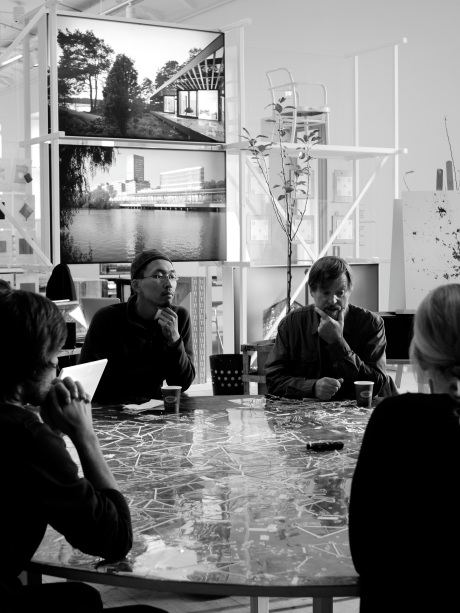Permaculture. An “approach to designing human settlements and agricultural systems that mimic the relationships found in natural ecologies,” according to Wikipedia. The idea is to move away from industrial farming in order to recognize the patterns of the way nature truly works. The aim: to create edible and bio-diverse landscapes that can sustain themselves as food forests. But what can we grow in the region of Stockholm, how do we do it, and how can people that are interested in sustainable techniques connect with those who already are using this kind of methods? These questions were the starting point of last Thursday’s conversation with architect and permaculture expert Bertil Thermaenius, and Hiroshi Okawa, architecture student at University of Tokyo.
As the small farms we once had in Sweden became less viable during the industrial era, this traditional knowledge fell into oblivion. “We lost a lot on the way, but people are still rather close to the land in the countryside, and many of the houses that were used for farming still stand,” Bertil said. The barns might be falling apart––but they can still be repaired. Bertil himself started having chickens in his backyard in 1988. The following year he and some like minded started a permaculture association in Sweden. The original permaculture movement, scientifically developed by Australians Bill Mollison and David Holmgren and their associates during the 1970s in a series of publications, gained international attention in the beginning of the 1980s. Today, the movement has grown substantially, and now includes everything from a farm in the Austrian Alps when the permaculture guru Sepp Holzer is challenging common assertions of what can be grown in the mountains to roof gardens in London. Recently, an international group set out to support permaculture relief and restoration projects in Haiti in response to the earthquake that took place earlier this year.
What then grows in the city of Stockholm? “In permaculture, we focus on things you don’t have to seed everyday, perennials,” Bertil explained. “In the industrial city, you need 25 hectare of land in energy to take care of one hectare of land. In ecological farming you might need an input of 10 to 1. And in permaculture it is 1 to1,” he told us. “It is all up to our imagination and experience––things just don’t happen, it takes knowledge and time to build such a system,” Bertil concluded. According to Bertil, one key to success is to include the children. “They are the ones that have a chance to do something about this,” he said. They could be given access to school gardens, for example, which would give them a greater understanding of local growth.
So, is it possible that the energy that goes into the city can go back to the farmland? How can an interest among people for ecological gardens be created? And, do we need to form an entirely new system, or can we build on the existing one? For the time being, there might be many questions hanging in the autumn air. But one thing we do know is that there is a lot of work to do, for all of us.
Text: Rebecka Gordan Photo: David Relan

